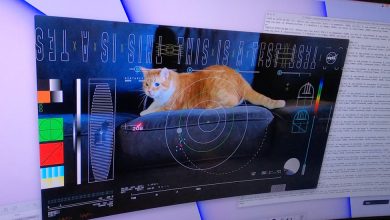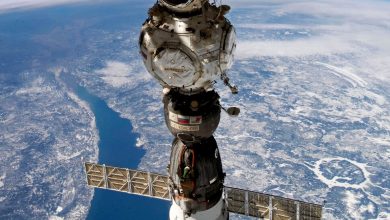Finding a Retirement Home for 466 Frozen Flatworm Fragments

Marian Litvaitis, a professor emerita at the University of New Hampshire, decided to retire in December 2019. And she wondered what would happen to her worms.
Not just any worms: marine polyclad flatworms. They are visually striking, from the skunk-colored ruffles of Pseudobiceros gratus to the gold-rimmed fuchsia body of Pseudoceros ferrugineus.
Dr. Litvaitis had studied the worms for decades, traveling to the Caribbean and Indo-Pacific seas to collect hundreds of samples of their tissue and DNA, which were all stored in the minus 80 degree Celsius freezer in her lab. But labs at her school are cleared out once researchers leave, and there are often no systems in place to ensure that irreplaceable collections of scientific arcana don’t end up in a dumpster alongside old papers and broken lab equipment, which they often do. Dr. Litvaitis remembered some of her colleagues scrambling to find a place for hundreds of hagfish swatches or shelves of bobcat skulls.
Taking them home wouldn’t work either.
“I didn’t want to keep them in the freezer in my basement,” Dr. Litvaitis said of her flatworms, adding that blackouts are not uncommon in her New Hampshire neighborhood. She reached out to the Ocean Genome Legacy Center, a marine DNA genome bank near Boston that is part of Northeastern University, to see if it might want her collection of samples from 466 worms.
That made Dr. Litvaitis’s collection the first entry in a new program at the center called the Genome Resource Rescue Project that hopes to relieve retiring researchers of their hard-earned marine collections that have no other place to go. The project now holds thousands of donated samples from three researchers.
“Very few people have plans for their collections,” Dan Distel, the director of the center, said. “We don’t think about these things until the time comes, and then it may be a bit too late.”
Biological collections may seem static, conjuring images of pinned butterflies or jars of pickled fish. But they require space and maintenance — empty rooms for the bobcat skulls and ultracold freezers for flatworm DNA — ongoing expenses that universities may try to offload once the collectors’ researching days are finished.
Collections tied to specific research projects typically lack funding for long-term maintenance and storage, according to a 2020 report by the National Academies of Sciences, Engineering and Medicine. These collections can be “orphaned” — retained without upkeep or attention, which can damage the collection beyond repair, the report said. And the scientific community is notified haphazardly when these collections may be discarded or otherwise abandoned.
“The fate of such collections is often idiosyncratic, depending on a relationship a collector has with a natural history museum, space, funding, how the new material might contribute to an institution’s mission, quality of the collection offered as a gift,” James Collins, an evolutionary ecologist at Arizona State University and co-chair of the committee behind the report, said in an email.
Dr. Distel is not aware of other programs like the Genome Resource Rescue Project, but added that researchers sometimes reached out to museums to donate their collections after retirement. In 2017, the octogenarian entomologists Lois and Charlie O’Brien donated their private collection of more than one million weevils and 250,000 planthoppers to Arizona State University.
“However, it can be quite difficult for researchers to find homes for collections that have no public display value,” Dr. Distel said. Whole weevils are easy on the eye, but frozen tissue samples are less visually striking.
Preserving collections for posterity is a tenet of good science, Dr. Distel said. It’s also good for conservation of natural resources.
Collecting biological samples requires removing organisms from their natural environment, an inherently destructive practice. “It’s a Wild West mentality,” Dr. Distel said. He said some researchers had gathered samples “without first thinking, ‘Has someone else collected these materials?’”
The more samples preserved, the fewer organisms that may need to die for science in the future.
Collection is also expensive, often done on research expeditions funded by grants. H. William Detrich, a professor emeritus of biochemistry and marine biology at Northeastern University, is donating part of his collection of Antarctic fishes, including the clear-blooded icefish, to the center. Acquiring this collection required travel to Palmer Station in Antarctica and cruises on a research vessel.
“The logistics and support of my single program over 30 years, it’s millions and millions of dollars,” Dr. Detrich said. “I feel morally and ethically obligated to make sure that they get used in the future.”
In Dr. Distel’s eyes, Dr. Detrich’s collections are particularly urgent to preserve because they capture a snapshot in time in the Antarctic — an ecosystem that is one of the fastest warming areas on Earth.
That may make such collections the only records of what biodiversity looked like in formerly pristine ecosystems, allowing scientists to compare populations over time and degrees of degradation.
Over the course of her career, Dr. Litvaitis has watched as the tropical waters she sampled from the Caribbean became degraded by overfishing and climate change. This destruction is part of the reason she chose to focus on polyclad flatworms, which are dependent on specialized habitats such as coral reefs and can easily absorb pollutants through their body walls. Dr. Litvaitis donated several duplicate samples — swatches of the same species of worm taken from different geographic locations — as a record of where the worms once lived.
“Just to know what we have out there before we kill it off,” Dr. Litvaitis said.
The Ocean Genome Legacy Center makes its samples available to researchers from around the world. Open collections allow new researchers to confirm or challenge results drawn from samples and ensure more robust findings, Dr. Distel said.
Dr. Distel hopes the collections rescue program can also inspire researchers who are not close to retirement to start thinking proactively about the future of their samples. Planning for retirement is difficult while juggling grant applications, paper submissions and actual research. “It’s kind of a rat race,” Dr. Detrich said. “You’re trying to keep your head above water.”
But the earlier researchers start thinking about preservation, the sooner they can start documenting their collections in ways that are meaningful and accessible to the general community, Dr. Distel said. “So that when they get to the end of their career, it can be a trivial task to donate materials to a collection,” he added.
After retiring at the end of 2021, Dr. Detrich is still organizing his samples for donation, matching the samples in his freezer to handwritten notes made in fishing logs and dissection records. “You might imagine that over about 30 years, exactly where samples were might get a little dicey,” he said.
Dr. Detrich started off with four full freezers full of samples; he’s now down to one and a half freezers.
The Ocean Genome Legacy Center did not have enough room to take all of Dr. Detrich’s samples, so he has sent some to colleagues conducting active research. One of his former colleagues, Jacob Daane, now a researcher at the University of Houston, is heating icefish embryos to predict how climate change might affect their development.
Dr. Litvaitis is happy to no longer be the caretaker of the fragments of 466 long-dead worms. “I’ve pivoted my interests to other things,” she said, like writing bedtime stories for her grandson, researching her family history and knitting.
The center has already digitized her collection, so anyone who wishes to study her marine polyclads can do so. “That’s the way we can grow science,” Dr. Litvaitis said. “Without the work of previous people, what do we have?”





